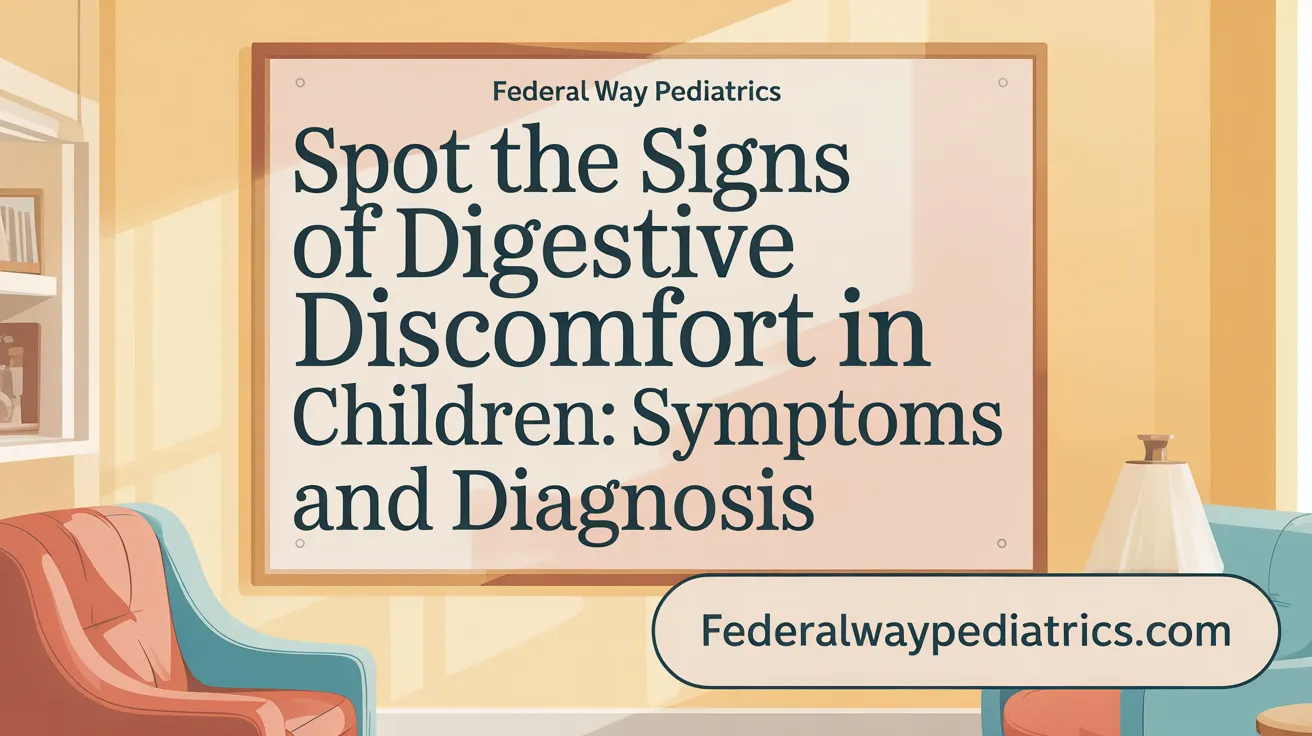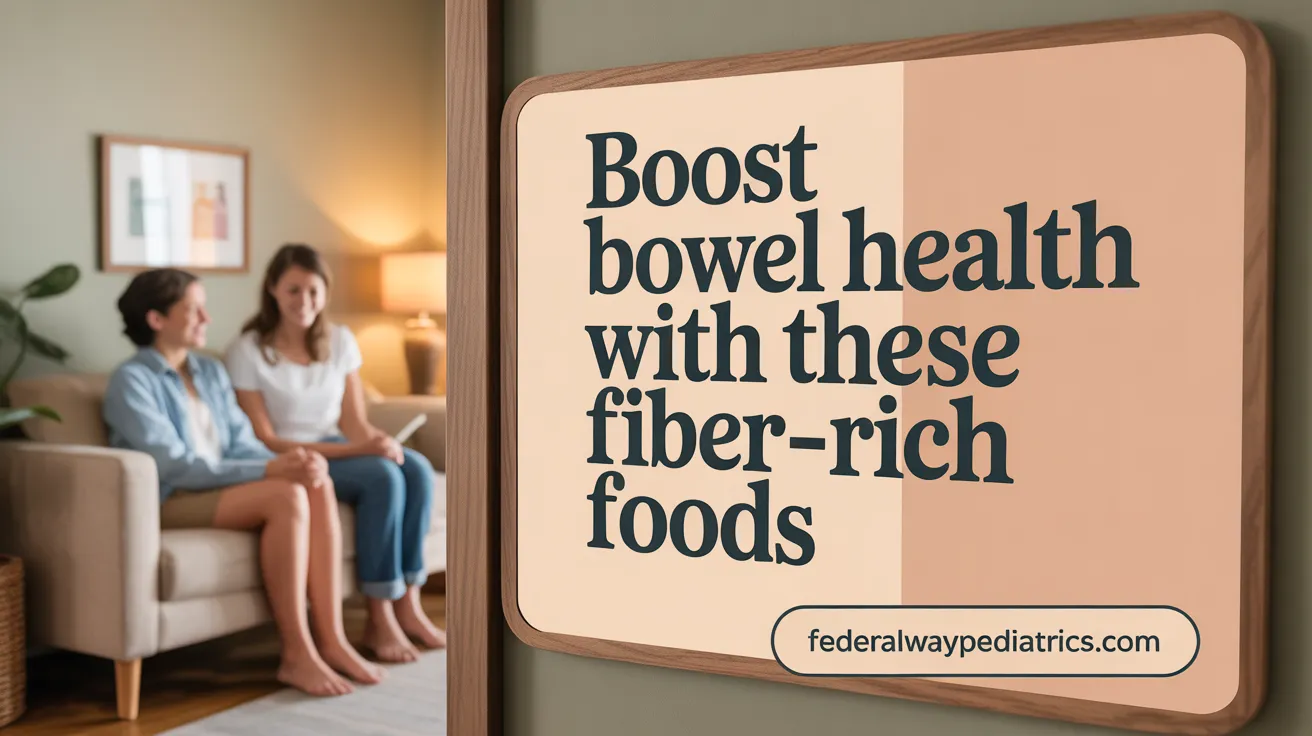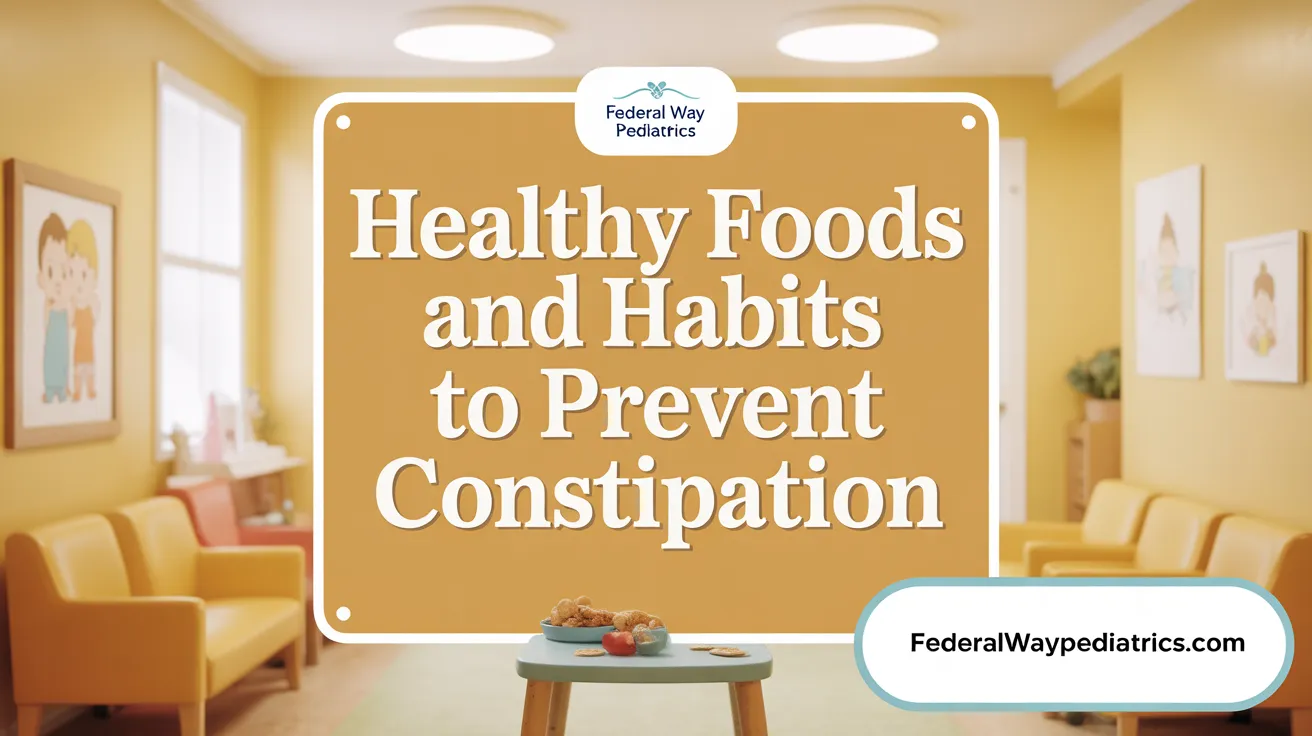Understanding Childhood Constipation and Its Dietary Roots
Constipation is a common and often distressing condition affecting children, characterized by infrequent or difficult bowel movements that can cause discomfort and affect daily life. Understanding the causes, symptoms, and the critical role of diet provides parents and caregivers with the tools needed to manage and prevent constipation effectively. This article explores key dietary changes, hydration strategies, and lifestyle modifications that can alleviate constipation and promote healthy digestion in children.
What is Childhood Constipation? Causes and Symptoms

What is constipation in children and what causes it?
Constipation in children refers to a condition where bowel movements become infrequent, hard, or painful to pass. Usually, a child with constipation has fewer than two bowel movements a week, or experiences difficulty during defecation due to hard stools. This occurs when stool moves slowly through the digestive system, causing excessive water absorption and resulting in dry, hardened stool.
Several factors contribute to childhood constipation. Poor dietary habits, such as low intake of fiber-rich foods like fruits, vegetables, and whole grains, are common causes. Inadequate fluid consumption, especially water, can also make stool hard and difficult to pass. Dietary changes, like increased consumption of processed foods or dairy, may worsen the problem.
Behavioral behaviors, including withholding stool due to pain from prior constipation or toilet training difficulties, often create a cycle of worsening symptoms. Stress, emotional issues, or changes in routine, such as starting school or moving to a new home, can trigger withholding behaviors.
Lifestyle factors are also influential. Lack of physical activity slows gut motility, leading to constipation. Certain medications and allergies, especially to cow’s milk, have been associated with constipation in some children. Rarely, underlying medical conditions such as hormonal disorders, anatomical abnormalities, or neurological diseases cause or contribute to constipation.
Children may develop the habit of withholding stool when experiencing pain or discomfort, which leads to impaired bowel function and further hardening of stool. Most cases are functional, meaning there’s no underlying disease, but persistent or severe symptoms warrant medical evaluation to exclude organic causes.
What are the common symptoms and how is childhood constipation diagnosed?
Children with constipation often present with infrequent bowel movements, usually fewer than two per week, or with hard, dry, small stools that are painful to pass. They may complain of abdominal pain, bloating, and increased discomfort during defecation.
Other signs include fecal incontinence or soiling, especially in children who have been toilet trained, which occurs because liquid stool leaks around impacted hard stool in the rectum. Observing retentive behaviors such as squeezing or crossing their legs during bathroom attempts, or avoiding the toilet altogether, can also be clues.
Diagnosis primarily relies on a detailed medical history and physical exam. Healthcare providers ask about bowel habits, recent changes in diet or routine, and any pain or discomfort associated with bowel movements. A physical exam often includes checking for signs of impacted stool, abdominal distension, and anal tone.
The Rome IV criteria are commonly used to diagnose functional constipation in children aged 4 and older. They include symptoms like infrequent defecation, painful or hard stools, stool withholding behaviors, and fecal incontinence, all lasting for at least one month.
Additional evaluation may be necessary if warning signs, such as bleeding, growth problems, or neurological symptoms, are present. Tests to exclude organic conditions like Hirschsprung disease or hypothyroidism are rarely needed if the clinical picture is clear.
In summary, childhood constipation is usually diagnosed based on medical history, physical findings, and symptom duration, with further tests reserved for atypical or severe cases.
Dietary Strategies to Alleviate Constipation in Children

What dietary strategies and nutritional tips can help alleviate constipation in children?
Managing constipation in children often involves dietary changes focused on increasing fiber and fluid intake. Offering high-fiber foods such as whole grains, legumes, fruits, and vegetables is a primary step. Good sources include whole wheat bread, oats, beans, peas, carrots, apples (with skin), berries, and pears.
It’s crucial to introduce these fiber-rich foods gradually over a few weeks. This gentle increase helps prevent bloating and discomfort while softening the stool. Encouraging children to eat the skins of fruits and vegetables can boost fiber intake. For example, adding sliced apples, pears, or berries to snacks and meals provides extra fiber.
Adequate hydration is equally important. Children should aim for about 6 to 8 glasses of water daily, and fluids can come from beverages like water, diluted fruit juices, and solid foods such as soups or yogurt. Proper hydration helps fiber work more effectively by softening the stool.
It’s advisable to limit foods low in fiber and high in processed ingredients, such as chips, fast food, processed snacks, and excessive dairy. These foods can contribute to harder, drier stools.
Incorporating fiber-rich foods into each meal and snack, along with maintaining a consistent eating schedule, can further support regular bowel movements. For instance, serving oatmeal, whole-grain bread, fruit salads, and bean-based dishes eases constipation.
Lastly, habits like encouraging daily physical activity and establishing regular toileting routines complement nutritional efforts, creating a comprehensive approach to improving bowel health in children.
Key High-Fiber Foods to Promote Healthy Bowel Movements

What are the best high-fiber foods to promote healthy bowel movements in children?
To support regular and comfortable bowel movements in children, incorporating a variety of fiber-rich foods into their daily diet is essential. Fruits like pears, which provide approximately 5.5 grams of fiber per fruit, and apples with about 3.6 grams, are excellent choices. Berries such as raspberries contain around 4 grams of fiber per half-cup, while bananas contribute roughly 3.1 grams.
Vegetables like baked mini carrots, offering about 2.9 grams per half-cup, and sweet potatoes with approximately 3.8 grams, serve as powerful sources of insoluble fiber that aid in softening stool. Including leafy greens and vegetables like broccoli can also increase fiber intake.
Whole grains play a crucial role; slices of whole wheat bread contain about 2 grams of fiber each, whereas a cup of cooked oatmeal provides around 4 grams. Whole-grain pasta and brown rice are additional healthy options, each delivering roughly 2 grams of fiber per serving.
Legumes, including lentils and split peas, are densely packed with fiber—often exceeding 10 grams per cup—and are highly effective for meeting daily fiber requirements. These foods help bulk up stool and promote easier, more regular bowel movements, essential for children prone to constipation.
In summary, combining fruits, vegetables, whole grains, and legumes ensures children receive sufficient fiber, supporting digestion and preventing constipation.
Foods and Habits to Avoid for Constipation Prevention

Which foods and habits should be avoided to prevent worsening constipation in children?
Preventing constipation in children often involves paying attention to both diet and daily habits. Certain foods are known to contribute to harder stools and infrequent bowel movements, so avoiding these can be very helpful.
Children should steer clear of low-fiber, processed foods such as chips, fast food, and frozen meals with minimal fiber content. These foods are often high in fats, sugars, and additives, which can slow down digestion and worsen constipation.
Excessive intake of dairy products, especially whole milk, cheese, and ice cream, should be limited because they can be constipating for some children. Similarly, sugary drinks, including soft drinks and concentrated fruit juices, should be avoided or given in moderation, as they provide little fiber and can lead to dehydration, further complicating bowel movements.
Beyond dietary choices, certain habits also hinder regular bowel function. Ignoring the natural urge to poo, delaying bathroom trips, or rushing through toilet time can promote stool retention.
A sedentary lifestyle without regular physical activity can weaken the muscles involved in bowel movement. Encouraging children to participate in daily play, outdoor activities, and exercise can positively influence gut motility.
Table summarizing foods and habits to avoid:
| Foods to Avoid | Reason | Additional Notes |
|---|---|---|
| Processed snacks, chips | Low fiber, high fat | May cause stool to become hard |
| Fast foods, fried foods | High fat, low fiber | Slow digestion |
| Sugary drinks, sodas | No fiber, dehydrating | Should be replaced with water or diluted fruit juice |
| Excessive dairy (milk, cheese) | Can cause constipation | Limit to 2-3 servings per day |
| Frozen, microwavable meals | Usually low in fiber | Prefer homemade, fiber-rich options |
| Habitual ignoring of urges | Promotes stool retention | Develop regular bathroom habits |
| Sedentary lifestyle | Decreases gut motility | Promote daily movement |
Incorporating a diet rich in fruits, vegetables, whole grains, and legumes, along with adequate hydration and regular exercise, significantly helps keep the bowels healthy. Establishing good bathroom routines, like sitting on the toilet after meals and responding promptly to urges, also supports prevention of constipation.
Hydration and Lifestyle Modifications to Support Healthy Digestion

What are the hydration and fluid intake recommendations for children with constipation?
Ensuring proper hydration is crucial for children experiencing constipation. Adequate fluid intake helps keep stool soft and easier to pass. The amount of fluids needed varies with age and weight. Generally, children weighing around 35 pounds should aim for about 7 cups (approximately 1.65 liters) of water daily, while those weighing about 60 pounds may require around 9 cups (about 2.1 liters). Alongside water, children can also benefit from natural fruit and vegetable juices like prune, pear, or apple juice, as well as clear soups, which contribute to hydration.
Maintaining good hydration is especially important during treatment with stool softeners such as polyethylene glycol (PEG 3350). Children on these medications should drink extra fluids—aiming for enough to keep urine clear—as a sign of adequate hydration. Combining increased fluid intake with fiber-rich foods significantly improves the effectiveness of constipation management.
What lifestyle and behavioral modifications can help manage and prevent constipation in children?
Managing childhood constipation involves both dietary and behavior changes. Increasing dietary fiber by including fruits, vegetables, whole grains, legumes, nuts, and seeds helps bulk up stool and promotes regularity. Fiber should be added gradually over several weeks to prevent bloating or discomfort.
Establishing a consistent toileting routine is equally important. Encouraging children to sit on the toilet for 5-10 minutes after meals helps utilize the body’s natural gastrocolic reflex. Using a footstool to elevate the feet can facilitate easier and complete bowel movements.
Physical activity plays a vital role. Regular exercise, such as walking, biking, or playing outside, can stimulate bowel muscles and support digestion.
Furthermore, teaching children to respond promptly to the urge to defecate and providing positive reinforcement when they do can develop healthy habits. Creating a supportive environment and avoiding punishment or pressure around bathroom use can decrease withholding behaviors and reduce the risk of chronic constipation.
In combination, these lifestyle modifications foster better bowel health and help prevent future episodes of constipation.
When to Seek Medical Advice and Preventative Measures

When should parents seek medical advice or treatment for constipation in their children?
Parents should consult a healthcare professional if their child's constipation lasts longer than two weeks or if they notice troubling signs like severe pain, blood in the stool, or a swollen abdomen. Immediate medical attention is necessary if the child experiences rectal prolapse, persistent vomiting, a significantly distended belly, or if they appear very unwell overall. Situations demanding prompt care also include fewer than three bowel movements weekly over an extended period, painful defecation, or soiling incidents. Young children, especially those under 2 months, with bleeding or symptoms of bowel obstruction require urgent evaluation. Additional concerning features include symptoms such as fever, unintentional weight loss, or continuous vomiting, which warrant prompt medical consultation.
Promoting Digestive Health Through Diet and Lifestyle
Childhood constipation is a manageable and often preventable condition with the right combination of dietary changes, adequate hydration, and lifestyle modifications. Incorporating a variety of high-fiber foods, encouraging regular fluid intake, and establishing consistent toileting and physical activity routines are fundamental to supporting healthy bowel function. While most cases resolve with these measures, recognizing symptoms early and seeking medical advice when necessary ensures prompt treatment and reduces complications. Empowering parents and caregivers with knowledge and practical strategies fosters better digestive health and comfort for children, improving their overall well-being and quality of life.
References
- Eating, Diet, & Nutrition for Constipation in Children - NIDDK
- Food as Medicine: Food Therapy for Constipation
- Dietary advice for children with constipation | CUH
- Foods That Help Relieve Constipation in Kids
- Constipation in Children
- Kids Health Info : Constipation
- Constipation in Kids: Causes, Types & Treatment
